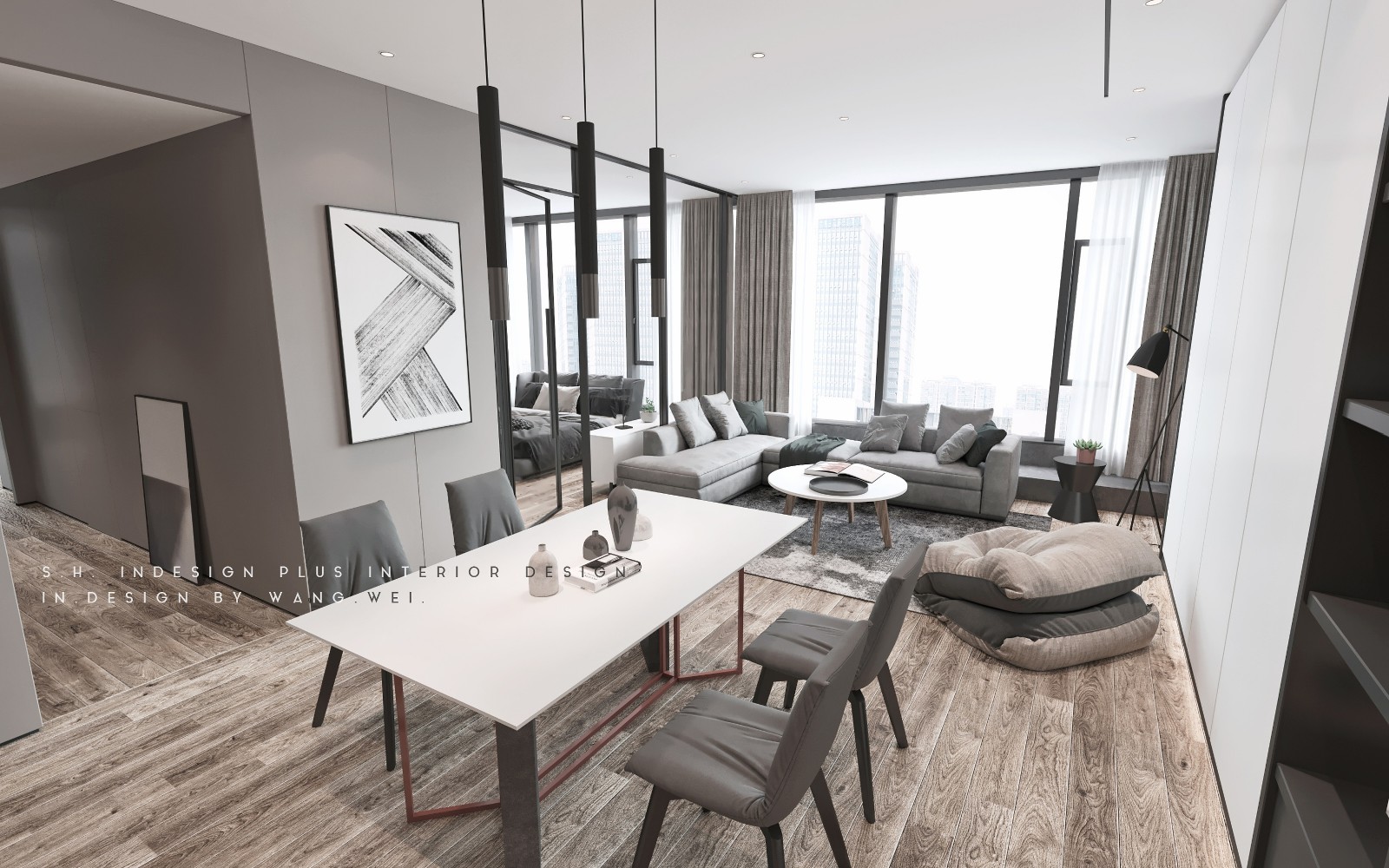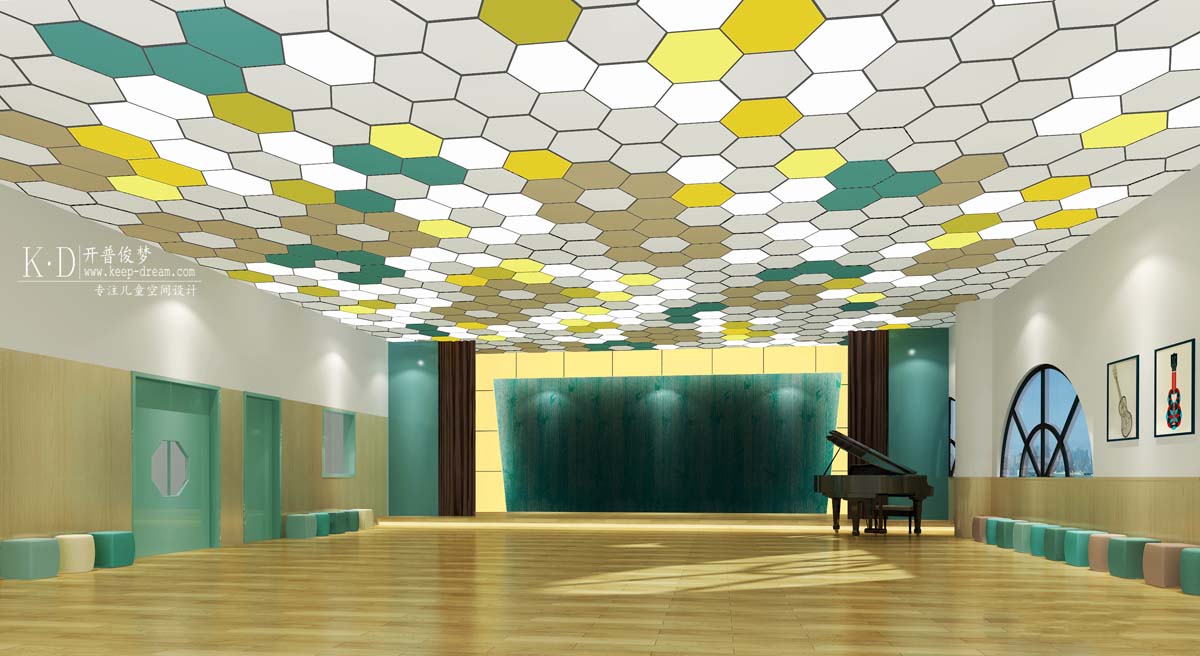Hamyangjae guga Urban Architecture
2017-01-18 20:00
© Yoon Joon-Hwan
.尹俊焕


架构师提供的文本描述。这座当代的红砖房子包括韩国传统建筑Hanok,在首尔附近有两个孩子的家庭。客户对自己的房子有着特殊的要求,那就是房子应该给他们一个安静的空间,给他们的孩子们一个宽敞的家。
Text description provided by the architects. This contemporary red brick house embraces Hanok, a traditional Korean architecture, for a family with two children near Seoul. Clients had specific demands for their own house that it should have a restful space for them and a spacious home for their children.
全国五分之一的人口现在居住在首都。为了应对日益增长的需求,不可避免地要在设计上考虑较少的情况下建造高层公寓,以加快整个过程。相应地,它成为最受欢迎的生活方式。然而,也有短缺。他说:“客户告诉我们,他们在家里很难有宾至如归的感觉。公寓楼因楼层间的噪音问题而闻名。“建筑师继续说,“因此,活动是非常有限的”相同的设计和克制的生活方式,现在许多居民找到了另一种方式居住在城市。
A fifth of the population of the entire country now resides in the capital. As a response to the growing demand, it has been inevitable to build tall apartments with less consideration on design to speed up the whole process. Correspondingly, it became the most popular type of living. However, there are also shortages. “Clients told us that they could hardly feel at home in their house. Apartment blocks are famous for noise issues between the floors.” Architect continued “Accordingly, activities are highly limited” The identical design and restrained lifestyle now make many inhabitants to find an alternative way to dwell in the city.
© Yoon Joon-Hwan
.尹俊焕


将Hanok嵌入当代建筑对建筑师来说是一个巨大的挑战。“有两项要求。首先,房子的一部分应该是汉诺克。其次,它应该有马当,朝鲜族园林,朝南“汉诺克部分与当代部分的对比似乎是突出的。平衡这两种不同的施工方法是本项目的主要关注点。建筑师说:“马当就像一个缓冲地带,可以冲淡任何可能的断线。”马当也自然地通过大窗户融入客厅。它的功能就像一个孩子们的大游乐场,在那里他们可以整天跑来跑去。这个好玩的时刻一直持续到楼上,在那里可以找到小图书馆和书房。
Embedding Hanok into a contemporary building was a big challenge for the architect. “There were two requests. Firstly, a part of the house should be Hanok. Secondly, it should have Madang, Korean garden, facing south” The contrast between the Hanok part and the contemporary part seems to be prominent. Balancing these two different construction methods was the main concern in this project. “Madang is like a buffer zone to dilute any possible disconnection” said architect. Madang also naturally blends into the living room through the large windows. It functions like a big playground for the children where they can run around all day. This playful moment continues to upstairs where the small library and the study room can be found.
© Yoon Joon-Hwan
.尹俊焕




“哈米扬杰”的三大卷是包围马当的伎俩。建筑师不得不寻找另一种解决办法,让马当保持私密,因为附近不允许有栅栏。
The three big volumes of Hamyangjae was the manoeuvre to enclose Madang. The architect had to seek an alternative solution that could keep Madang private since having fences is not allowed in the neighbourhood.
结果,入口扩大了,顶部有一个露台,下面有一个储藏室。哈米扬杰的三块土地使建筑的每一面都与众不同。从入口外面,哈诺克完全消失了。在另一边,整个群众分成三卷,并给出一个哈诺克的暗示。“汉诺克单位可以完全脱离红砖部分,没有任何损害”建筑师解释说。
As a result, the entrance is enlarged that has a terrace on the top and a storage below. The three masses of Hamyangjae makes every side of the building distinctive. From the outside of the entrance, Hanok completely disappears. On the other side, the whole mass splits into three volumes and gives a hint of Hanok. “Hanok unit can be completely detached from the red brick part without any damage” explained the architect.
© Yoon Joon-Hwan
.尹俊焕


产品描述。
Product Description.
海湾窗:为了配合整个概念设计,对海湾窗进行了仔细的选择。除了带来强烈的视觉联系,海湾窗口能够打开从中心到极端,允许一个强大的物理连续性从内到外马当。
Bay window: The bay window was carefully chosen in order to fit with the whole conceptual design. Apart from bringing a strong visual connection, the bay window is able to open from the center to the extremity, allowing a strong physical continuity from the inside to the outside Madang.
© Yoon Joon-Hwan
.尹俊焕


传统的设计系统窗口:窗口是韩国传统建筑中的重要元素。首先,他们允许光线进入房子,同时给居住者很大的隐私。第二,模式的类型与内部程序有关,也象征着居住者的地位。最后,它也是内部气氛的一个重要因素。在这个项目中,现代系统窗口的使用使项目能够保持那些传统的品质,但也具有很好的隔离性和易用性。
Traditional design system windows: Windows are important elements in the traditional korean architecture. First, they allow the light to enter in the house while giving a strong privacy to the habitants. Secondly, the type of pattern are related to the inside program and also symbolic to the status of the habitants. Finally, it is also an important factor of the inside atmosphere. In this project the use of a modern system window allowed the project to keep those traditional qualities but also to have a good isolation and ease of use.
© Yoon Joon-Hwan
.尹俊焕


木地板:木地板通常需要在汉诺克来象征会议空间。这些珍贵材料的使用给了我们以前称之为“Maru”的空间的一些重要性。它也被用来区分会议空间和单独的房间,称为邦。通过这种方式,哈诺克可以被看作是丸和邦的交替。Maru也可以看作是将内部空间与室外空间连接起来的门槛。在该项目中,整个汉诺克都被现代木地板覆盖,以利用与传统地板不兼容的地板采暖系统。
Wooden floor: Wooden floor is usually need to in the Hanok to symbolize the meeting spaces. The use of the precious material give some importance to those space that we used to call Maru. It is also used to differentiate the meeting space from the individual room called Bang. In this way a Hanok can be seen as an alternating of Maru and Bang. The Maru can also be seen as a threshold which connect the inside space between themselves and also the inside spaces with the outdoor spaces. In this project, the whole Hanok is covered with a modern wooden floor in order to take advantage of the floor heating system which is not compatible with the traditional one.


花岗岩石:花岗岩是传统汉诺克中的重要元素。它们被用作吉丹项目的基础,木柱也矗立在一块名为“Choseok”的坚硬石头上。在这个项目中,为了适应现代生活方式,我们决定将花岗岩作为整个马当韩国庭院的地面材料。与最初覆盖在马当的土壤相比,石头人行道让孩子们在清洁的环境中玩耍,同时也增加了规划的可能性。起居室不是用木地板覆盖,而是用石头铺路,这突出了马当与室内空间之间的连续性。
Granite stone: Granite stone is an important element in the traditional Hanok. They are used for the foundation of the project Gidan and also the wooden columns are standing on a strong piece of stone called Choseok. In this project, in order to fit with the modern life style, we decided to extend the granite stone as the ground material for the whole Madang Korean courtyard. Compared to the originally soil covered Madang, the stone pavement allows the children to play in a clean environment but also multiply the programmatic possibilities. The living room rather than covered with a wooden floor is covered with a stone pavement which highlight the continuity between the Madang to the inside space.
© Yoon Joon-Hwan
.尹俊焕


红砖:红砖是韩国当代和传统建筑的重要外部材料。它也是,通常,用于城市汉诺克。然后,使用这种材料将房子的现代和传统部分连接成一个独特的整体是合乎逻辑的。
Red bricks: The red bricks are an important outside materials for the contemporary and traditional Korean architecture. It is also, usually, used for the urban Hanok. It is then logical to use this material to connect the contemporary and traditional part of the house into a unique ensemble.
Hanji纸墙:使用Hanji纸来创建空间之间的界限。它以一种微妙的方式分离它们之间的空间。这些无框元素在闭合时,会感觉到墙是统一的。另一方面,当打开时,它们会感觉到两个连接的空间看起来就像一个独特的空间。最后,韩基的微小透明度给空间带来了一个令人印象深刻和和谐的气氛。
Hanji paper wall: Hanji paper are used in order to create a limit between spaces. It separate in a subtle way the spaces between them. Those frameless elements, when they are closed, give the feeling that the wall is unified. In the other hand, when opened, they give the feeling that 2 connected spaces look like a unique space. Finally, the slight transparency of the Hanji give an impressive and harmonious atmosphere to the space.
© Yoon Joon-Hwan
.尹俊焕














































.jpg)













Architects guga Urban Architecture
Location Seongnam-si, South Korea
Category Houses
Architect in Charge Junggoo Cho, Jina Yoon, Seunghwan Jeong
Area 223.9 m2
Project Year 2012
Photographs Yoon Joon-Hwan
Manufacturers Loading...































